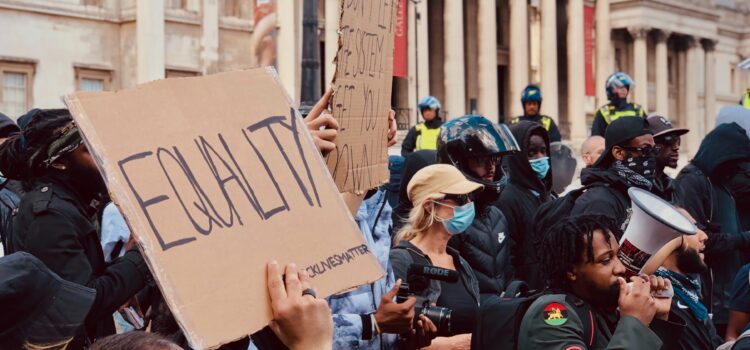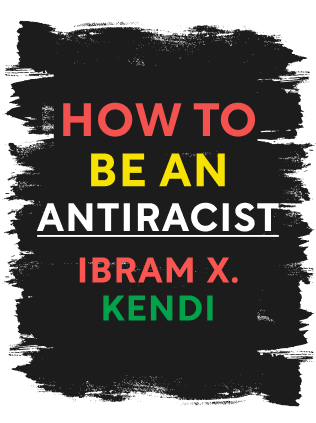

This article is an excerpt from the Shortform book guide to "How to Be an Antiracist" by tIbram X. Kendi. Shortform has the world's best summaries and analyses of books you should be reading.
Like this article? Sign up for a free trial here .
What is How to Be an Antiracist by Ibram X. Kendi? What are the key messages of the book?
How to Be an Antiracist by Ibram X. Kendi is a book that shares the author’s journey through perspectives on race and racism. The book offers a three-step guide to becoming antiracist.
Read more about How to Be an Antiracist by Ibram X. Kendi and the key steps for applying its lessons to your own life.
Overview of How to Be an Antiracist by Ibram X. Kendi
How to Be an Antiracist is part how-to and part memoir. Author Ibram X. Kendi, like many of us, grew up in a racist society and internalized many of its ideas. Throughout much of his life, he was racist, and in How to Be an Antiracist, he describes how he changed his thoughts and actions—and how you can change yours—to become an antiracist.
How to Be an Antiracist by Ibram X. Kendi covers three major steps to becoming antiracist:
- Learn what racism is and how it evolved.
- Become aware of subtle racist ideas you might have been unknowingly supporting and weaken them.
- Start supporting antiracist rather than racist policies.
Step #1: Learn What Racism Is
The first step to becoming antiracist is to understand what racism is and what causes it.
Most people think that the concept of race came first, then people developed racist ideas, and then, finally, people developed racist policies stemming from their racist ideas. However, the true order of events is different: The policy created to further self-interest—the lucrative slave trade of Africans—came first, and then race was invented to justify the policy. Racist ideas came last.
Before we examine these events in more detail, we need to understand why the order of these events matters. There are two primary reasons:
- The fact that discriminatory policies came before the idea of race shows that race is not an inherent, biological quality. Rather, it’s a social construct invented by those in power to maintain and perpetuate that power.
- Many people think that colorblindness, not “seeing” race, is a solution to racism. However, this idea is misguided. If the concept of race had produced racist policies, eradicating race as a means of eradicating racism might make sense. But, just as the invention of race came after the implementation of racist policies, we can only dispense with the idea of race after we’ve gotten rid of racist policies—if we start at the wrong end and get rid of race first, we’ll fail to see that some policies negatively impact certain racial groups. Eradicating race may be one of the last steps of creating an equitable society, but it’s certainly not the first.
Racism, Antiracism, and the Myth of Neutrality
Now that we understand that we understand that racist policies created out of self-interest are the root cause of racism, we can understand racism and antiracism more precisely.
Racism
How to Be an Antiracist by Ibram X. Kendi defines racism as a combination of racist policies and ideas that causes and maintains racial inequities.
An example of a racist idea is the generally held belief that Black people are more dangerous than White people. Growing up, Ibram believed in this idea and was constantly scared that the other Black kids at his school would beat him up.
An example of a racist policy was the one in Ohio that required newly registered voters in the 2004 federal election to submit their voter-registration forms on a particular kind of expensive paper, which made it harder to register. The policy appeared to target all newly registered voters, irrespective of race, but a large percentage of newly registered voters were Black, meaning the policy promoted racial inequity.
Antiracism
How to Be an Antiracist by Ibram X. Kendi defines antiracism as a collection of antiracist policies and ideas that cause racial equity.
An example of an antiracist idea is the belief that no race’s culture or subculture is better than any other’s.
Examples of antiracist policies are the Immigration and Nationality Act (1965), the Refugee Act (1980), and the Immigration Act (1900), all of which encouraged immigration to the US from non-European countries. Although, in various ways, these acts favored non-Europeans over European immigrants, the acts were antiracist rather than racist because they promoted equity among immigrant groups. In other words, they aimed to rectify the current and historical imbalance that favored White immigrants.
Step #2: Become Aware of Subtle Racist Ideas You Might Be Supporting
Like Ibram, most of us live in a society created by racist policies and racist ideas. All of us internalize these ideas to some extent, and a large part of becoming antiracist is reflecting on our beliefs and recognizing what racist ideas we hold.
There are many different types of racism, each based on different racist ideas.
Ethnic Racism
Ethnic racism is a combination of racist policies that causes racial inequities between racialized ethnic groups. These policies are supported by racist ideas about the differences between racialized ethnic groups, the main idea being the belief that there’s a hierarchy within races—certain ethnic groups within a race are superior or inferior to others within the same race.
- For example, European colonizers decided that there were “Five Civilized Tribes” of Indigenous people. The Seminole, Creek, Choctaw, Chickasaw, and Cherokee were civilized, and all the other Indigenous ethnic groups were wild.
Colorism
“Light” and “Dark” refer to the varying skin colors of people of color. Light people have straighter hair and lighter skin, but they aren’t White. Dark people have bigger noses and lips, kinky hair, and darker skin. These two groups are made up of people from many nationalities, ethnicities, and races—membership is assigned based on physical appearance.
Colorism is a combination of racist policies and ideas that causes and maintains racial inequities between Light and Dark people, the main idea being the belief Light people are superior to Dark people.
- For example, in 2007, sports commentator Don Imus said that Tennesse’s Light basketball players were cute while Rutger’s Dark ones were “nappy-headed hos.”
Queer Racism
Race is inextricably linked to other identities such as sexuality, gender, and class, and bigotry towards any identity can have a multiplying effect on racism.
Queer racism is a combination of racist policies that causes racial inequities between race-sexualities. These policies are supported by racist ideas about the differences between race-sexualities. Queer racists link race and sexuality and arrange these race-sexualities into a hierarchy.
- For example, in the US, on average, transgender women of color have a life expectancy of 35 years because they face so much transphobia and racial violence. On the racist hierarchy of race-sexualities, transgender women of color are near the bottom, and cisgender White heterosexual males are at the top. (If you’re cisgender, your gender identity is aligned with the gender you were assigned at birth.)
Anti-White Racism
Anti-white racism is the belief that people of European descent are behaviorally, biologically, or culturally lesser than other racial groups, or the belief that all White people are part of racist power. (The definition of anti-White racism doesn’t include racist policy that creates racial inequity because, historically, White people have been favored by policy.)
- For example, Elijah Muhammad, who led the Nation of Islam, wrote that White people had been created by an evil Black scientist.
Step #3: Start Supporting Antiracist Policy as Described in How to Be an Antiracist by Ibram X. Kendi
The third step to becoming antiracist is to start addressing the root cause of racism—policy.
Ibram founded the Antiracist Research and Policy Center, which uses the following steps to work towards ending racial inequity. You can take these steps, too:
- Acknowledge that the problem is caused by policy, not people.
- Acknowledge that racial inequity is intersectional—it’s related to class, gender, and sexuality.
- Find out which specific policies are causing inequity.
- Come up with new antiracist policies to replace them.
- Determine which individuals or groups have the power to put antiracist policies into place.
- Educate the public about specific racist policies and antiracist replacements.
- Connect with antiracist policymakers to get the new antiracist policies implemented.
- Get rid of racist policymakers by asking antiracist policymakers to force them out of office.
- Make sure the new antiracist policy is having an equalizing effect.
- Assess whether or not the new policies are working. If they aren’t, look for new policies, not new people.
- Keep an eye on policymakers to make sure no new racist policies come into effect.

———End of Preview———
Like what you just read? Read the rest of the world's best book summary and analysis of Ibram X. Kendi's "How to Be an Antiracist" at Shortform .
Here's what you'll find in our full How to Be an Antiracist summary :
- What racism is and how it evolved
- How you might have subtle racist thoughts and not even be aware of them
- Why being "not racist" isn't good enough






